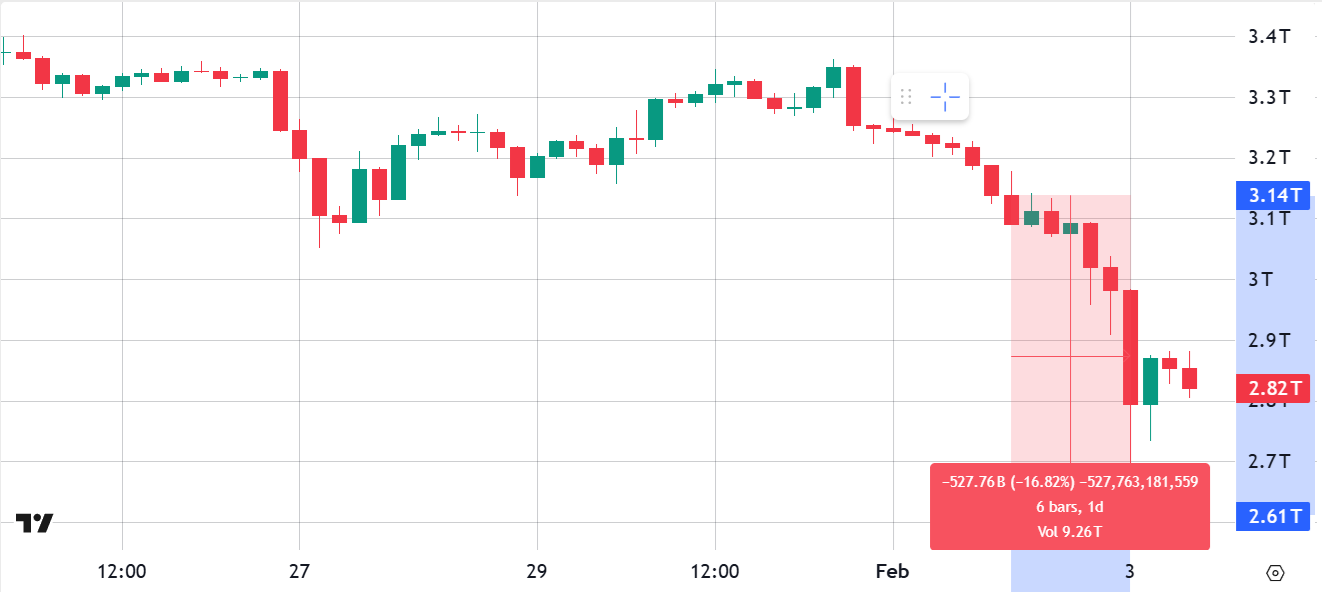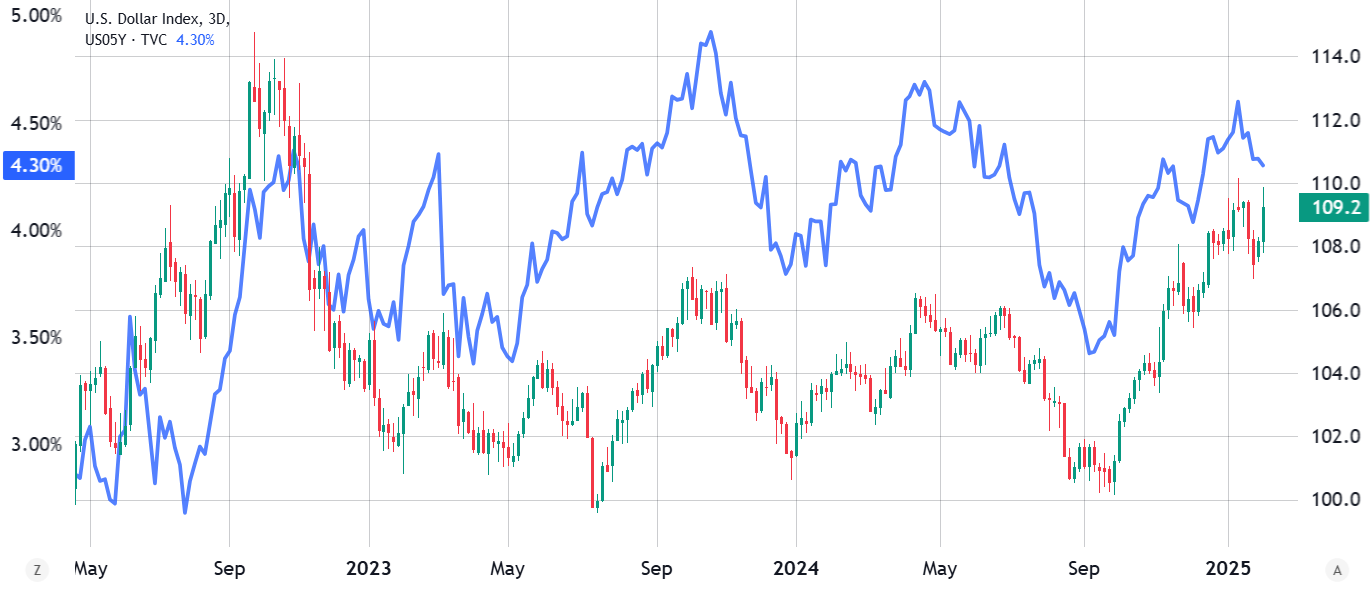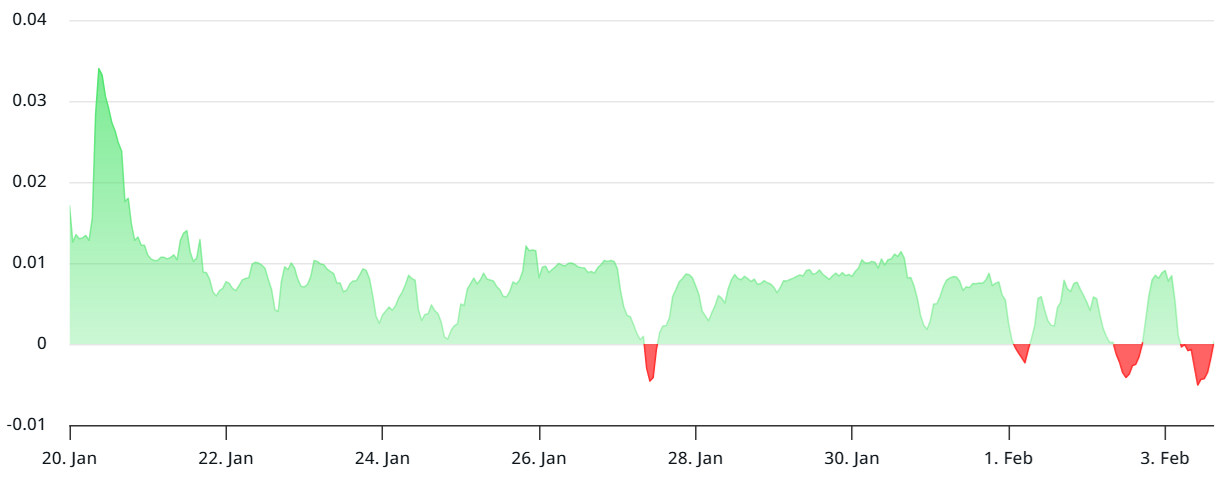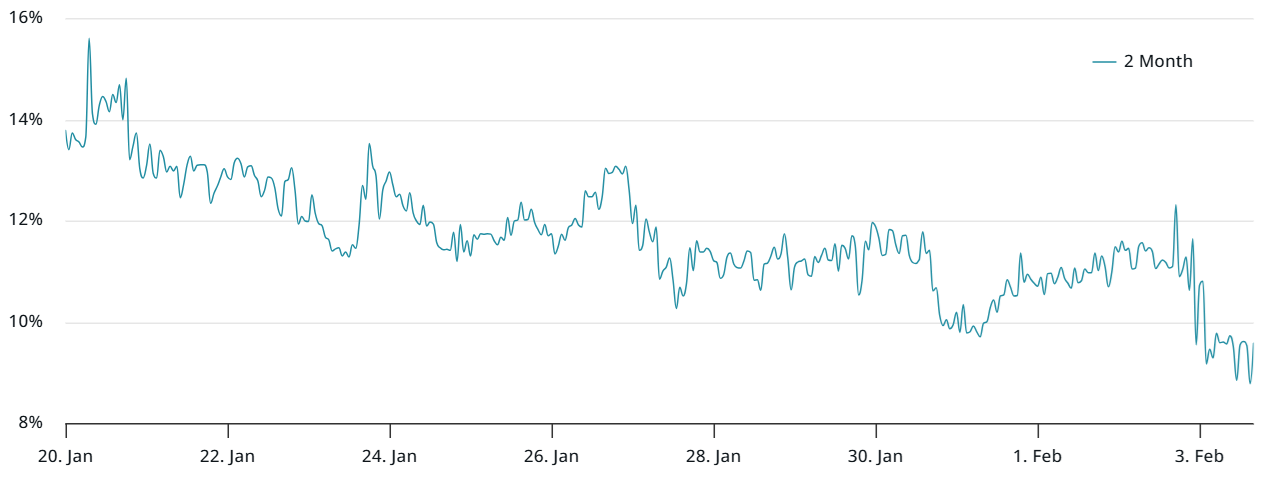
In the past 24 hours, the cryptocurrency market has experienced unprecedented madness. From 8 am on February 2nd to the time of writing, over 700,000 people have been liquidated, with a total amount exceeding $2.7 billion, setting a new historical high. The violent fluctuations in the market have almost left people gasping for air, with investors frantically selling in panic, causing the market to be paralyzed at one point. The trigger for all this was Trump's tariff threat, like a time bomb ready to explode at any moment.
However, the situation took a dramatic turn after Trump suddenly announced a temporary suspension of tariffs on Canada and Mexico. He reached an agreement with the two countries, promising to cooperate in cracking down on illegal drugs and the influx of immigrants into the United States. This unexpected news was like a "lifeline" that quickly eased the market's tense mood. In the face of global economic uncertainty, this decision seemed to have injected a shot of adrenaline into the market. Canadian Prime Minister Justin Trudeau and Mexican President Claudia Sheinbaum have both confirmed that the tariff suspension will last for at least 30 days. The market reacted accordingly: Bitcoin rebounded from the previous day's low of $92,000 to $101,000, and confidence has been somewhat restored. However, all of this still reminds us that the cryptocurrency market is like a fragile kite, constantly influenced by external forces.
External Pressure Weighing Down: How Long Can Bitcoin Hold On?
Although Trump's tariff suspension has brought a glimmer of hope to the market, the uncertainty of the global economy remains the biggest "enemy" of cryptocurrencies like Bitcoin.

Cryptocurrency market capitalization (excluding stablecoins). Source: TradingView
On February 2nd, the cryptocurrency market experienced a 17% correction, with the total market value dropping to $2.61 trillion, the lowest level in nearly eight weeks. The rapid decline in the market has also made investors' emotions more tense, shifting their attention to changes in the external macroeconomic environment.
Specifically, factors such as the trade dispute between the United States and China, the rise in government bond yields, and the strengthening of the US dollar have put additional pressure on the cryptocurrency market. On February 1st, US President Trump announced the imposition of additional tariffs on Chinese goods, immediately triggering a violent market reaction. Subsequently, the Chinese Ministry of Commerce proposed countermeasures, further exacerbating the economic confrontation and the market's unease.
Although Bitcoin has rebounded to $102,000 in the short term, market participants still question whether it can maintain this price range. The continued escalation of external economic pressure still leaves the market facing potential downside risks.
Cryptocurrency Market: Hot and Cold - Bitcoin "Alone in the Cold", While Some Altcoins Remain Resilient
Not all cryptocurrencies are equally affected.Major coins such as Bitcoin, BNB, Solana, and XRP have not fallen below their 90-day lows, maintaining relatively strong resilience.
At the same time, Ethereum fell to $2,110 during the trading session on February 3rd, the first time it has closed below this level since December 2023. However, it would be too one-sided to attribute this adjustment entirely to Ethereum's performance, as it is more likely to have been influenced by broader macroeconomic factors.

US 5-year Treasury yield (left) and US Dollar DXY index (right). Source: TradingView
Looking back at history, the cryptocurrency market capitalization fell below $2.6 trillion in November 2024.At that time, the rise in US government bond yields caused investors to withdraw from the fixed-income market. However, this round of adjustment is quite different from the previous one, as investors in the current market are more cautious, and the outflow of funds has slowed significantly.
Futures Market Signals: Short-term Bottom, Limited Upside Potential
If the impact of external macroeconomic pressure on the cryptocurrency market is obvious, then the Bitcoin derivatives market provides us with a more detailed perspective. Although Bitcoin performed relatively better than Altcoins during the market crash on February 2nd, the dynamics in the futures market make us cautious about its short-term prospects.

Bitcoin perpetual futures 8-hour funding rate. Source: Laevitas.ch
The Bitcoin funding rate turned negative on February 3rd, indicating a significant decrease in demand for long positions. The change in funding rates reflects the cautious sentiment of investors, especially during periods of market turmoil. Although this change is not drastic, it still reflects that investors tend to remain cautious in the face of uncertainty.
More importantly, the open interest in the Bitcoin futures market remains around 630,000 Bitcoin, indicating that institutional investors and large traders are still active in the market. This suggests that, although the market sentiment has recovered somewhat in the short term, the potential for Bitcoin to break through $110,000 is still limited.
Futures Premium: Slight Correction, Professional Investors "Remain Calm"

Bitcoin 2-month annualized futures premium. Source: Laevitas.ch
Although the volatility in the cryptocurrency market is significant, some signals from the Bitcoin futures market convey a different message. On February 3rd, the annualized Bitcoin futures premium declined from 11% to 9%. While this decline may seem small, it is still close to the 10% bullish threshold.This means that, although Bitcoin's price has fallen 16.5% from its historical high of $109,354 on January 20th, professional investors remain relatively optimistic.
It is worth noting that the trading volume of Bitcoin monthly futures contracts is mainly driven by institutional investors and large traders, who are relatively more patient with market volatility. Therefore, although Bitcoin faces short-term pressure, professional investors do not seem to be in a hurry to withdraw from the market in the long run.
The Way Forward: Seeking Stability Amidst Volatility
The signals from the derivatives market indicate that Bitcoin has approached a short-term bottom, but whether it can break through the $110,000 level in the current rebound to $101,000 is constrained by multiple factors.Especially in the context of continued global economic pressure, the uncertainty surrounding Bitcoin's ability to surge again remains high. For investors, closely monitoring market trends and maintaining flexible responses will be the key to navigating the future market volatility.






